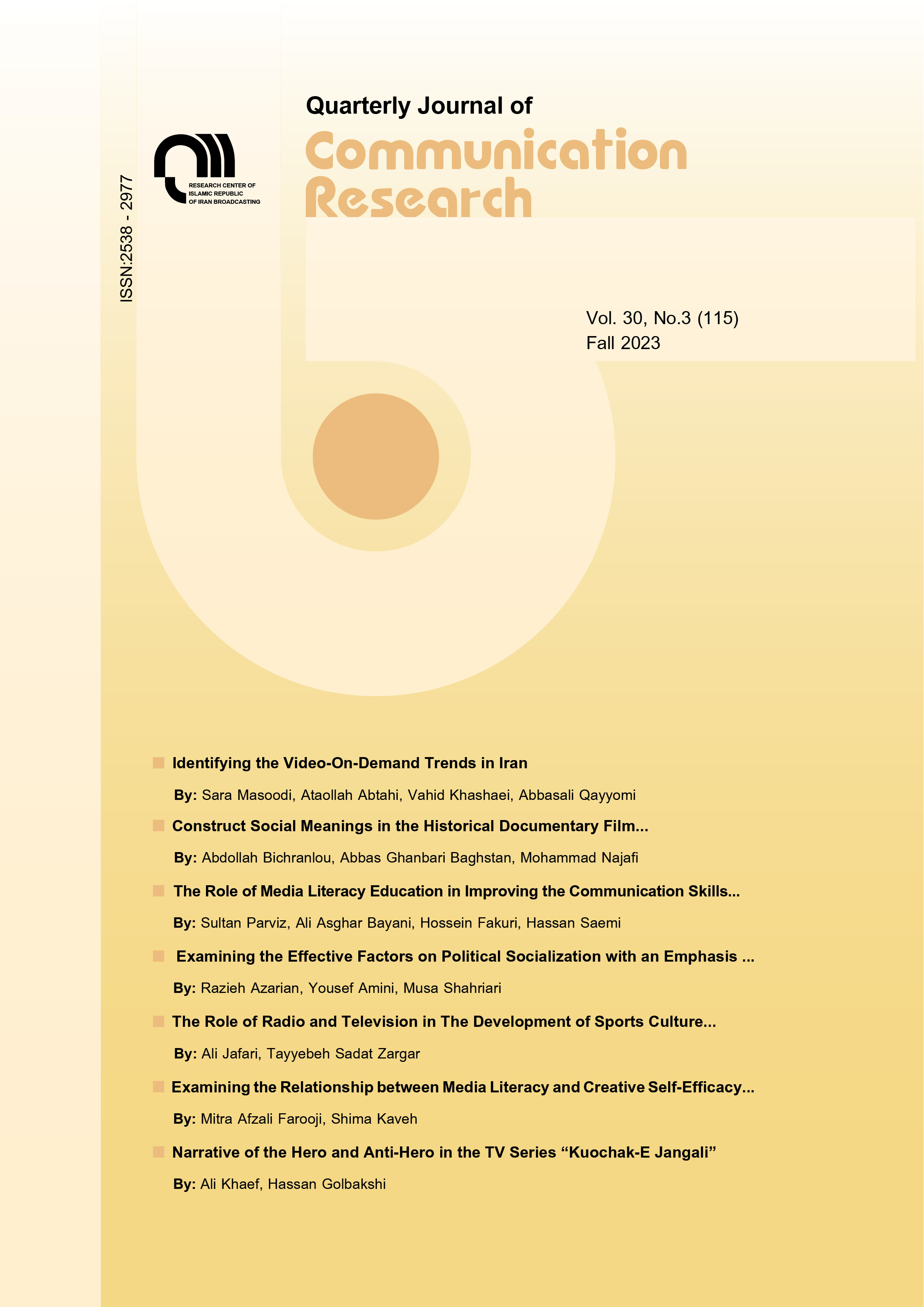Document Type : Original Article
Authors
1 Media Management, University Lecturer, Department of Media Management, University of Tehran, Tehran,, Iran ,
2 Media Management
Abstract
The present research has examined the relationship between media literacy and creative self-efficacy of IRIBs’ employees in TV Deputy of IRIB. This research is descriptive, conducted using correlational and survey method. The statistical population includes the employees of the Islamic Republic of Iran Broadcasting (2100 people) from which 324 were randomly selected as a sample. To collect data, a researcher-made questionnaire adapted from Torrance’s creativity questionnaire and Falsafi’s media literacy questionnaire was used. The validity and reliability of the questionnaires were acceptable (with Cronbach›s alpha 0.88). The findings of the research indicated that there is a significant and positive relationship between media literacy and creative self-efficacy of employees of the Islamic Republic of Iran Broadcasting Organization. Also, a meaningful and positive relationship was seen between media literacy and the components of creativity from Torrance’s point of view, which was examined in 4 components of innovation, development of creativity, fluidity and flexibility. The results of this study showed that if the knowledge and skills of media literacy of media workers would be improved, their potential ability in the emergence of career creativity will increase, and the belief of each individual in their ability to think, act and create innovative solutions will increase. Because creative self-efficacy is a good predictor for better job performance of people; Relying on this
capability as a factor for competition in media productions, one can achieve self-actualization of employees on one hand and the use of creativity in the production of creative media content on the other hand.
Keywords
Main Subjects

